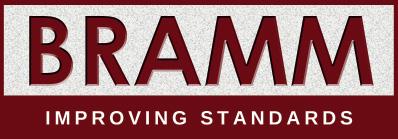56
The ICCM Journal | Autumn 2020 | V88 No. 3
keep calm and wash your hands In March, Coronavirus changed the way funerals were delivered, not only in the UK, but all over the world. Initial PHE modelling of 500,000 additional deaths, projected the potential for huge operational challenges for the whole funeral industry. Merseyside Resilience Forum Merseyside Resilience Forum (MRF) began its structured response to the pandemic, and we began our journey with the establishment of a Death Management Cell (DMC) to manage the impact of the projected increase in deaths. The cell was made up of various response partners from Merseyside Fire and Rescue, Merseyside Police, Local Authorities, Funeral Directors, Armed Forces, NHS and PHE. The aim of the Death Management Cell was to support the Merseyside Resilience Forum and its terms of reference in order to cope with the impacts of the COVID-19 Pandemic. The Cell will seek to provide support when normal operational procedures fail.
were lucky enough to procure some temporary storage, however, this was still not going to be installed until after the Easter break. The Easter Bank Holiday was around the corner, and the closure of facilities would only compound the issue, therefore urgent action was required. When we looked at how we could ease the pressures on mortuary storage, by improving transition to the next stage of the process, we felt this would be the easiest and most cost effective way forward, we called this the mortality pathway. Short term use of some of the MRF Disaster Victim Identification (DVI) Nutwell emergency fridge systems (pictured below) provided some important capacity over the Easter break, however this had still not given us the capacity we needed, we needed the help of our Funeral Directors to get through Easter and maintain the mortality pathway.
Some of the partners were not fully familiar with the death to funeral process so we broke down the key components of the route from death to final repose. Whilst I recognise this will not be the same in all regions and there will be factors which influence this such as cultural requirements, Merseyside’s generic ‘mortality pathway’ is shown in the flow chart on the next page. We used the flow chart to analyse our current provision and identify potential areas of stress or failure, this quickly identified key issues such as: • We didn’t have enough mortuary capacity for projected death rates. • We didn’t know the capacity of the funeral directors in the area. • The current time slots available for burial and cremation were not sufficient for the projected death rate. • The potential loss of 20% of a specialised workforce due to the virus. In order to keep the DMC effective the member numbers were limited, and an additional cemeteries and crematorium and funeral director’s cell was formed to ensure the effective communication to and from the DMC. We also decided that this should be a Merseyside response and welcomed our colleagues from Greenacres Rainford into the group. Nationally there were various approaches to similar shortfalls and pressures which saw developments of huge standalone mortuary facilities or additional mortuary capacity at hospitals to ease the pressure on funeral directors and burial and cremation providers. In our initial analysis we had plans to develop a large mortuary facility however this was discounted as the pressure on the mortuaries eased after Easter. Additional temporary mortuary storage for some of our hospital sites were awaiting delivery from the Cabinet Office but would not be operational until April or early May. The death rate increased rapidly as we approached the peak of the pandemic during the first week in April, and mortuaries were rapidly reaching capacity. The Portakabin systems arriving from Cabinet Office were not going to meet our urgent need and the availability of additional storage systems from other suppliers was limited. Following a few long days and numerous telephone calls and emails, we
Funeral Directors The next stage of the mortality pathway was to move deceased for the mortuaries to the Funeral Directors as quickly as possible, to ensure that mortuary space was retained. It was important that all deceased released for burial and cremation were collected by the funeral director promptly, mortuary teams were already busy with the increase in deaths therefore needed support. Police colleagues in the DMC stepped forward to support the mortuary teams, they quickly implemented a 7 day contact point for the mortuaries and funeral directors. The officers contacted FDs on a daily basis advising them of deceased which had been released and feeding back to mortuary teams when the FDs would be taking the deceased into their care. The funeral directors reacted well to this unusual contact method, collecting deceased promptly and freeing up essential capacity in the mortuaries over the Easter Bank Holiday period. We were conscious that funeral directors also had a limited storage capacity, therefore, it was important that the next phase of the pathway offered the opportunity to book and deliver funeral services in a timely manner. Burials and Cremations With limited mortuaries and funeral directors reaching capacity it was essential that funeral time slots were available to maintain















